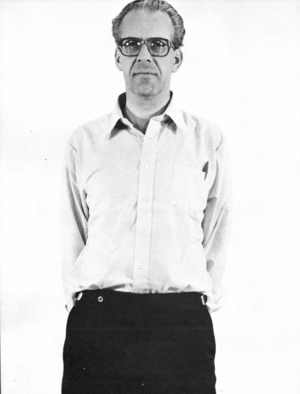Maarten Schmidt facts for kids
Quick facts for kids
Maarten Schmidt
|
|
|---|---|

Schmidt in 1978
|
|
| Born | 28 December 1929 Groningen, Netherlands
|
| Died | 17 September 2022 (aged 92) Fresno, California, U.S.
|
| Nationality |
|
| Alma mater | Leiden Observatory |
| Known for | Quasars |
| Awards |
|
| Scientific career | |
| Fields | Astronomy |
| Institutions | California Institute of Technology |
| Doctoral advisor | Jan Oort |
Maarten Schmidt (born December 28, 1929 – died September 17, 2022) was an astronomer from the Netherlands. He became famous for being the first to measure the distances to mysterious objects called quasars. He was also the first astronomer to identify a quasar. Because of his important discovery, he was featured on the cover of Time magazine in March 1966.
Contents
Early Life and Education
Maarten Schmidt was born in Groningen, a city in the Netherlands, on December 28, 1929. His father, Wilhelm, worked as an accountant for the Dutch government. His mother, Annie Wilhelmina, was a housewife.
Schmidt loved learning about math and physics. He studied these subjects at the University of Groningen. He earned his first degree, a bachelor's degree, in 1949. The very next year, he received his master's degree. He then continued his studies at Leiden University. There, he worked under a famous astronomer named Jan Oort. Maarten Schmidt earned his PhD from Leiden Observatory in 1956.
Discovering Quasars
After finishing his PhD, Schmidt moved to the United States. He spent two years there on a special scholarship. He went back to the Netherlands for a short time. But in 1959, he moved to the US permanently. He began working at the California Institute of Technology, also known as Caltech.
Understanding Galaxies and Star Formation
At first, Schmidt studied how mass is spread out in galaxies. He also looked at how galaxies move. During this time, he developed an important idea. It is now known as the Schmidt law. This law helps scientists understand how fast new stars are born. It connects the amount of gas in space to the rate of star formation.
Identifying 3C 273
Later, Schmidt started studying the light from radio sources in space. These are objects that give off strong radio waves. In 1963, he made a huge breakthrough. He used the powerful 200-inch reflector telescope at the Palomar Observatory. With this telescope, he found the visible object that matched one of these radio sources. It was called 3C 273.
He also studied the spectrum of 3C 273. A spectrum is like a rainbow of light. It can tell scientists a lot about an object. Even though 3C 273 looked like a star, its spectrum showed something amazing. It had a very high redshift. This meant it was moving away from Earth very quickly. It also meant it was incredibly far away, far beyond our own Milky Way galaxy. Because it was so far away, it had to be extremely bright.
Schmidt called 3C 273 a "quasi-stellar" object. This means "like a star." Soon, this name was shortened to "quasar." Since his discovery, scientists have found thousands of other quasars.
Recognition for His Work
Maarten Schmidt's discovery was so important that he was featured on the cover of Time magazine in March 1966. In 2008, he shared the first-ever Kavli Prize for Astrophysics with another scientist, Donald Lynden-Bell.
Personal Life
Maarten Schmidt married Cornelia Tom in 1955. They met at a party hosted by his former professor, Jan Oort. They stayed married until Cornelia passed away in 2020. Together, they had three daughters: Anne, Elizabeth, and Marijke.
Maarten Schmidt died on September 17, 2022. He passed away at his home in Fresno, California. He was 92 years old.
Honors and Awards
Maarten Schmidt received many honors for his work in astronomy.
Awards
- Helen B. Warner Prize (1964)
- Front cover of Time magazine (March 11, 1966)
- Henry Norris Russell Lectureship (1978)
- Gold Medal of the Royal Astronomical Society (1980)
- Golden Plate Award of the American Academy of Achievement (1980)
- James Craig Watson Medal (1991)
- Bruce Medal (1992)
- Kavli Prize for Astrophysics (2008)
Memberships He was also a member of several important scientific groups:
- Member of the American Academy of Arts and Sciences (1969)
- Member of the National Academy of Sciences (1978)
- Correspondent of the Royal Netherlands Academy of Arts and Sciences (1980)
- Member of the German Academy of Sciences Leopoldina (1995)
- Member of the American Philosophical Society (2000)
- Member of the Norwegian Academy of Science and Letters
Named After Him
- An Asteroid was named in his honor: 10430 Martschmidt.
See also
 In Spanish: Maarten Schmidt para niños
In Spanish: Maarten Schmidt para niños

